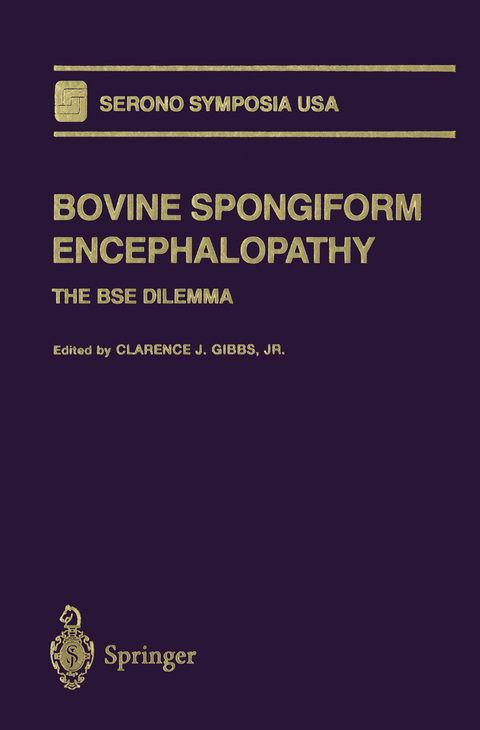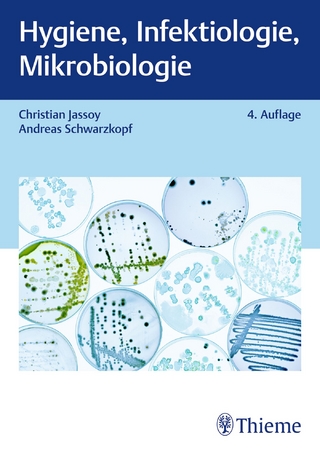
Bovine Spongiform Encephalopathy
Springer-Verlag New York Inc.
978-1-4612-7527-5 (ISBN)
1. The Potential Risk to Humans of Amyloids in Animals.- I. Host Range and Pathogenesis.- 2. Bovine Spongiform Encephalopathy Distribution and Update on Some Transmission and Decontamination Studies.- 3. Preliminary Observations on the Pathogenesis of Experimental Bovine Spongiform Encephalopathy.- 4. Recent Observations on the Epidemiology of Bovine Spongiform Encephalopathy.- II. Transmission and Pathogenesis of Spongiform Encephalopathies.- 5. Scrapie: Studies on Vertical and Horizontal Transmission.- 6. Transmission of Sheep and Goat Strains of Scrapie from Experimentally Infected Cattle to Hamsters and Mice.- 7. Experimental Transmission of Scrapie to Cattle.- 8. An Assessment of Transmissible Mink Encephalopathy as an Indicator of Bovine Scrapie in U.S. Cattle.- 9. Experimental Infections of Cattle and Mink with the Agents of Transmissible Mink Encephalopathy, Scrapie, and Bovine Spongiform Encephalopathy.- 10. BSE-Free Status: What Does It Mean?.- 11. Differing Neurohistologic Images of Scrapie, Transmissible Mink Encephalopathy, and Chronic Wasting Disease of Mule Deer and Elk.- 12. Analysis of Risk Factors and Active Surveillance for BSE in Argentina.- 13. Speculations on the Origin of BSE and the Epidemiology of CJD.- III. Biochemistry: Protein Chemistry, Molecular Biology, and Molecular Genetics of the Spongiform Encephalopathies.- 14. Structure and Biologic Characteristics of Prion Protein (Scrapie Amyloid): Implications for the Safety of Naturally Derived Biologics.- 15. Prion Strains and Neuromuscular Disease in PrP Transgenic Mice.- 16. Deciphering Prion Diseases with Transgenic Mice.- 17. Posttranslational Modifications and Conformational Changes of PrPSc and Their Relationship to Infectivity.- 18. Amyloidosis: The Key to the Epidemiology and Pathogenesis of Transmissible Spongiform Encephalopathies.- 19. Effect of Amphotericin B on Different Experimental Strains of Spongiform Encephalopathy Agents.- IV. Pathogenesis, Molecular Biology and Genetics, and Immunohistochemistry.- 20. Genetics of Human Spongiform Encephalopathies: Current Status.- 21. PrP Allelic Variants Associated with Natural Scrapie.- 22. The Formation of Scrapie-Associated Prion Protein In Vitro.- 23. Proteinase K-Resistant Prion Protein Detection in Animal Tissues and In Vitro.- 24. Elimination of Scrapie-Agent Infectivity in Naturally Derived Biologics.- 25. Cellular and Scrapie Prion Protein Immunolocalization and In Vitro Amyloid Formation.- V. Public Health Considerations of Human and Animal Spongiform Encephalopathies.- 26. Real and Theoretical Threats to Human Health Posed by the Epidemic of Bovine Spongiform Encephalopathy.- 27. Incidence of Creutzfeldt-Jakob Disease in the European Community.- 28. Problems in the Evaluation of Theoretical Risks for Humans to Become Infected with BSE-Contaminated Bovine-Derived Pharmaceutical Products.- 29. Evaluation of BSE Risk Factors Among European Countries.- Author Index.
| Reihe/Serie | Serono Symposia USA |
|---|---|
| Zusatzinfo | XXV, 413 p. |
| Verlagsort | New York, NY |
| Sprache | englisch |
| Maße | 155 x 235 mm |
| Themenwelt | Medizin / Pharmazie ► Gesundheitswesen |
| Medizin / Pharmazie ► Medizinische Fachgebiete ► Mikrobiologie / Infektologie / Reisemedizin | |
| Naturwissenschaften ► Biologie ► Mikrobiologie / Immunologie | |
| ISBN-10 | 1-4612-7527-X / 146127527X |
| ISBN-13 | 978-1-4612-7527-5 / 9781461275275 |
| Zustand | Neuware |
| Haben Sie eine Frage zum Produkt? |
aus dem Bereich


